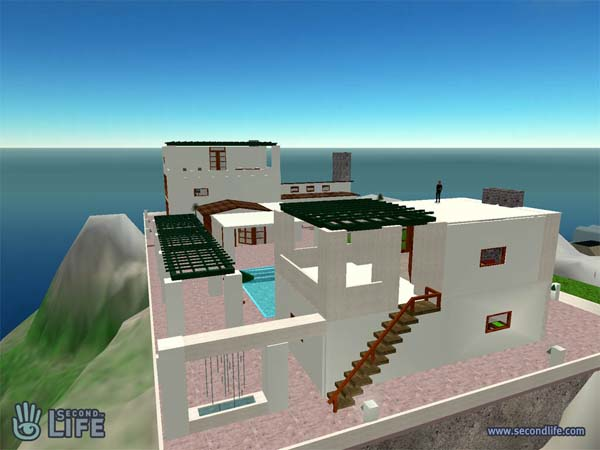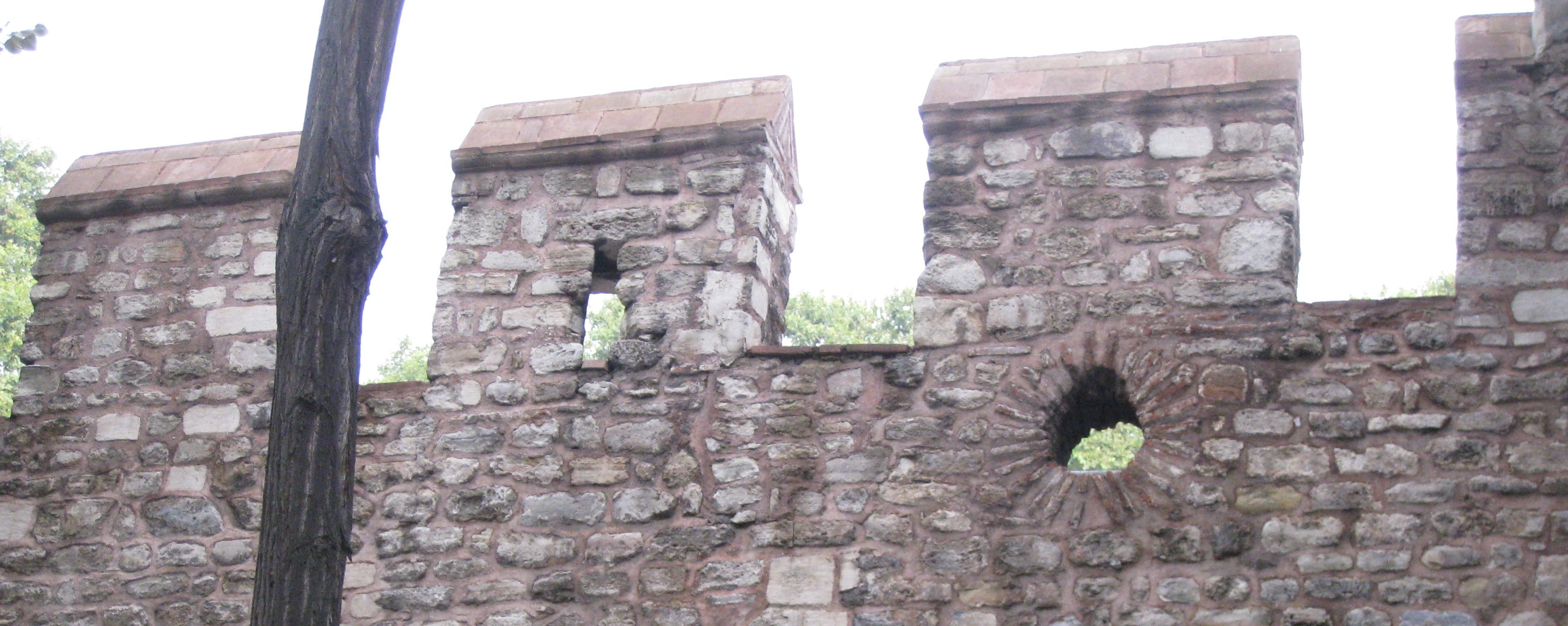Publicizing the Revolution
To achieve its goals, Arakawa and Gins's work needs to influence the public. Attempts to publicize the work are thus very important, but they threaten undercut the work's ability to work as it was supposed to. What might be done to make the work available in the right way? Is there a successful way to publicize an architecture designed to challenge the inhabitant's body and perception? How does one recreate a difficult architectural surround in flat media?
In print everything is made small and static. Probably most people who have experienced Arakawa and Gins' Mechanism of Meaning series have done so in book form. The panels in full size (approximately 5 x 8 feet) confront a person face-to-face. They demand attention. Even in a large-format coffee table book, the panels are reduced to the size of crossword puzzles. There is a subtle change in what dominates what. The reader is not challenged in the same way; she can pick up and put down.
Beyond print, perhaps a kind of cinéma vérité might help? Imagine using hand-held cameras accompanied by verbal narration as one walks through one of Arakawa and Gins' buildings, maybe with a Warhol-like film length reproducing daily living. This might make a difference, but who would watch it?
Cinema began outside the museum and then crept in, yet film has never had the museum as its goal. Cinema has tried to do what architecture tries to do, create a place that influences people to live differently. Of course, most films, like most buildings, aspire only to reinforce current patterns. But film's institutionalization in movie theaters created a special place with its own physicality of attention, a way of holding the body and being open. Now that spatiality is changing as more and more films are viewed at home.
On the couch watching the screen, or at one's desk watching the monitor, the physicality of film changes. Its influence becomes less total. Being closer to the TV or monitor makes the audience more distant from the film. Perhaps it is the ambient light level and the ease of moving about. Perhaps it is the absence of others concentrating together. Home viewing has then rebounded on the theatrical experience, as people feel more free to talk in the theater as they might at home.
People have been working to re-create the theatrical experience in home entertainment centers with special chairs and large screens and darkened rooms. But this does not have the spatiality nor the crowd, nor the social norms of the movie theater.
Yet even at its best viewing a film remains predominantly a passive experience, far from what Arakawa and Gins want for their architecture. So their work will not be well presented on film (1). Might there be some other way to make an experience more active and "physical"?
Wooden architectural model of a student project at the University of Texas School of Architecture.
Architects use models to present their designs. But with a wooden model it is difficult to avoid the god's-eye view from above. Digital models presented can show on a screen a model of the building's interior from different points of view. This can help. But if the architect's wooden model is replaced by a digital fly-through, which is literally disembodied, the experience still remains a kind of omnipresence that lacks precisely the kind of physicality of attention that Arakawa and Gins are trying to influence. The screen focuses as a single landing site, and a computer mouse makes all motion a flick of the wrist. There is no effort, no need to reorient one's body.
So a digital re-creation of one of Arakawa and Gins's buildings using ordinary screens would not accomplish their goals. It would again turn the building into a spectacle and lose the effort of living in this new surround. The usual digital presentation faces you, it does not surround and challenge.
A digital presentation can be made to surround you physically. A "Cave" uses three wall-sized screens, sensors to detect bodily motion, and computers to alter the images on the huge screens in response to the viewer's motion (2). In such a room you could feel you are inside a space designed by Arakawa and Gins. Peripheral vision and the ability to walk around and see different views would allow some of their architectural procedures that affect orientation and horizon. But, however much improved, the effect would still be mostly visual and contemplative, not involved.
All this makes it difficult for Arakawa and Gins's architecture to be successfully publicized on the Internet. On the net their work can only remain a curious spectacle, and the Internet, which brings some art out of the museum, would tend to put their architecture back in.

Digital architecture presented in the virtual world Second Life,
where the "camera" can give an aerial view and move around the player's avatar.
(Image copyright Second Life, all rights reserved).
A web page is not enough. A virtual world like Second Life could be a way to make a digital presentation of Arakawa and Gins's architecture. A virtual world can indeed contain real places where we can perform actions with real consequences (3). However, Second Life is also largely disembodied. It is purely visual and it is not fully first person. That is, the "camera" point of view floats around a person's avatar and can be made to back off and see what is behind and above, more than the embodied avatar's limited cone of vision could include. There is also no sense of difficulty dealing with slopes or rough surfaces. In addition, one can fly and avoid all the surface geometry, or teleport and avoid distances. There are reasons for these features in Second Life, and one can still walk around inside buildings, but the overall effect still reduces the experience of architecture to scenographic spectacle.
Is there a way to bring activity and physicality into a digital experience? The closest we night come, given currently available technology, would probably be to use the graphic potential of digital games, but arrange that one's avatar would be less bouncy and renewable than in games. Some difficulty and fatigue factors could be introduced, making motion less easy when there were slopes or narrow spaces. There could be an enforced first-person point of view, as in some shooter games, where participants only see what they turn their head to see, and have to choose what to concentrate on and what kind of visual landing sites to take note of, so that the surroundings are revealed piece by piece, perspective by perspective.

A scene from a first-person shooter game.
The player's avatar is represented by the gun barrels,
and the player's visual perspective depends on where the player turns and looks.
(Image from an advertisement at The Game Creators.).
This would allow procedures that involve multiple horizons and disorientation to have effects which would be missed in the usual digital fly throughs that allow one to see too much at one time and so avoid the physicality of attention.
Even so, such a digital presentation would remains on the screen and does not challenge the viewer's bodily inhabitation of space. A further step would be to feed the digital imagery into virtual reality equipment such as 3-D goggles or a Cave, with controls that have varying resistance, so that the viewer sees a limited and changeable perspective and experiences some muscular sensation of difficulty.
These reflections on the usability of various media for publicity show that Arakawa and Gins's work demands more than photos or a screening. Physical visits are needed, but shared bus trips to their works remain visits to the museum. Perhaps what might help would be to have samples of their work inserted into people's already built daily architectural surroundings -- not representations, but actual samples.
